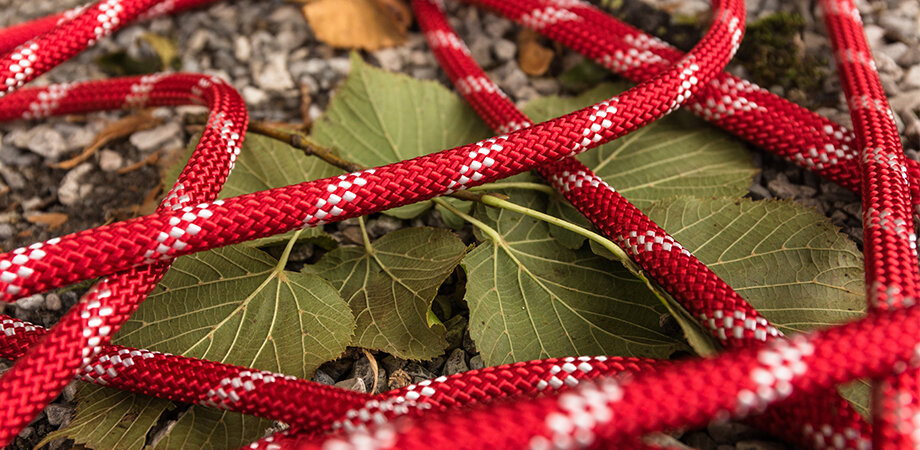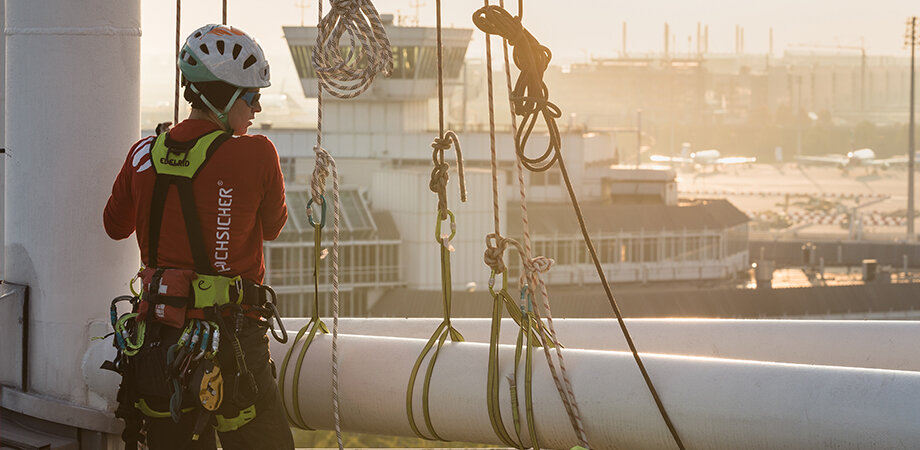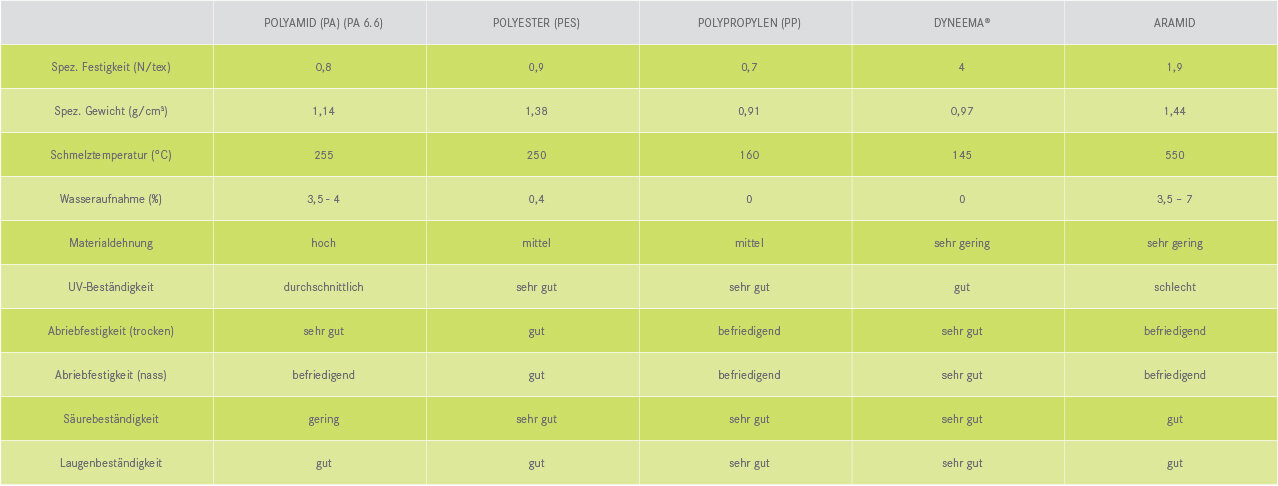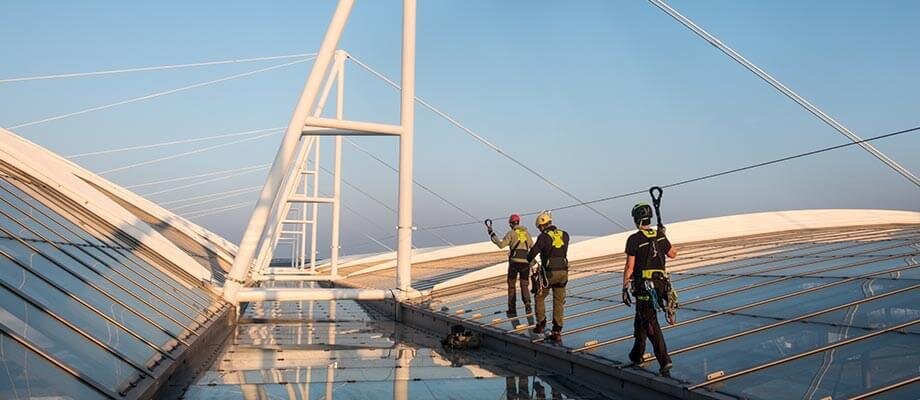THE LOAD-BEARING PART OF THE ROPE
The core is the load-bearing part of the rope. It's made of very fine multifilaments that are made into core strands or core braids. We use two distinct multi-stage processes: twisting and braiding.
What process is used to create core yarns?
Twisting is the standard technique for making core yarns. It involves winding multifilaments together. Up to 135 ultra-fine nylon threads are twisted together to make a core yarn. This process is called twisting. A number of these basic core yarns are then twisted together. Depending on the construction, two, four or five other yarns are combined to make a core strand. These core strands are then combined to form the rope core. The twisting process gives the rope its dynamic elongation, i.e. the ability to act like a spring when shock loaded. The number of twists over a given length determine the mechanical elongation and strength of a rope. Static ropes have much less twist in the core than dynamic ropes, creating a rope with much less elongation. To prevent unwanted twisting and kinking in the rope, some of the core strands are twisted in one direction, while the others are twisted the opposite way. As a result, the torsional forces cancel each other out and the rope remains twist and kink free.
With braiding, up to three basic twisted core yarns are interlaced to make a braided core strand. A number of these braided core strands are then combined to produce the rope core. This gives a particularly compact structure. Ropes with braided core strands keep their shape significantly better and have greater edge resistance than ropes with twisted core strands. In addition, they are easy to splice and are very strong with stitched terminations.
HOW THE ROPE IS PROTECTED FROM EXTERNAL INFLUENCES
The sheath protects the core from external influences, such as abrasion, UV radiation, etc. and prevents dirt from getting in. You can visually inspect a kernmantel rope by looking carefully at the sheath. If the sheath is damaged, and the inner core is visible then the rope should be retired. We use different types of sheath constructions depending on what a rope is to be used for:
Twisting the sheath
During twisting, two, three, four, or five individual sheath yarns are twisted together with a pre-set tension and rotation speed. Twisting the yarns increases the surface area of the sheath, which makes it significantly more abrasion-resistant.
Optimize handling
In this process the yarns are twisted and then additionally shrunk. This takes place in an autoclave, a kind of gigantic pressure cooker. The fibres are shrunk together using a particular combination of heat and pressure. Shrinking the sheath yarns in this way ensures that they remain pleasantly soft and easy to handle throughout the rope's lifespan. Furthermore, the sheath will not shrink, even with intensive use.
Doubling
Doubling is different to twisting. The yarns are wound parallel to one another (without twisting) onto bobbins. Running the fibres in parallel, allows us to utilise them to their full length. We can achieve very high breaking strengths, depending on the technical specifications of the fibres used. The only drawback is that doubled sheaths are less robust than twisted sheaths.





